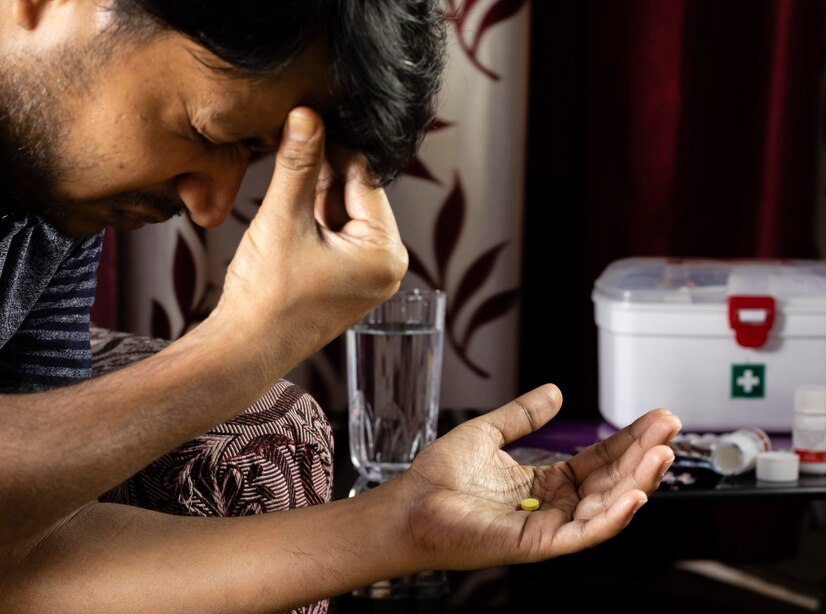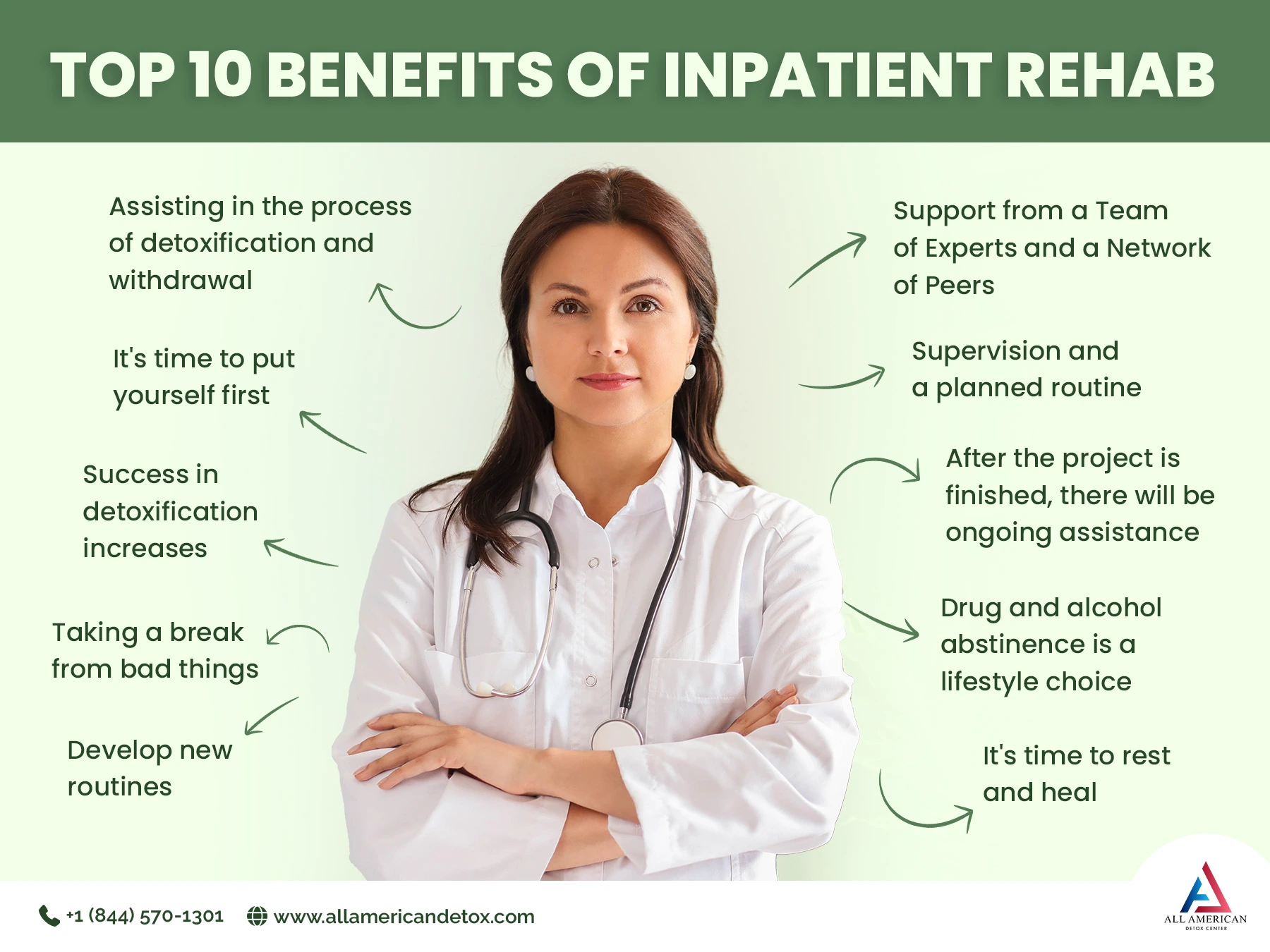Recovering from addiction is a deeply personal and challenging journey that requires a supportive and nurturing environment. Creating such an environment is crucial for individuals transitioning from a structured rehabilitation program, such as All American Detox, back into their daily lives. The home, often a place of comfort and security, can either bolster or hinder this delicate process.
In this article, we will explore how to transform your living space into a sanctuary that promotes sobriety and aids in recovery. From understanding the psychological and emotional benefits of a supportive home environment to practical steps for reducing triggers and creating routines, this guide aims to provide comprehensive strategies to facilitate a smoother transition. Additionally, we will discuss the vital role of family and friends in this journey, offering insights into how they can contribute positively to the recovery process.
By the end of this article, you will have a clear roadmap to creating a home environment that not only supports sobriety but also fosters long-term recovery and well-being. Whether you are someone in recovery or a loved one looking to offer support, these insights will empower you to make meaningful changes that contribute to a healthier, more supportive living space.
Contact Us for Detox Services
I. Understanding the Importance of a Supportive Home Environment
Creating a supportive home environment is a cornerstone in the journey to recovery, particularly for those navigating sobriety following a stay at All American Detox. The significance of a conducive living space cannot be overstated, as it directly impacts the mental and emotional well-being of individuals striving to maintain a substance-free life. This section delves into the multifaceted importance of cultivating such an environment.
A. The Role of a Safe Space in Recovery
A safe and stable home acts as a sanctuary for those in recovery. It provides a refuge where individuals can decompress, reflect, and recharge without the constant fear of encountering triggers or negative influences. The sense of security that comes from knowing one is in a controlled and supportive setting can significantly bolster the resolve to stay sober. This feeling of safety is essential for rebuilding trust and self-esteem, both of which are often eroded by addiction.
B. Psychological Benefits of a Supportive Environment
The psychological benefits of a nurturing home environment are profound. A space that encourages positivity, tranquility, and support can markedly reduce feelings of anxiety and depression, which are common during recovery. Such an environment fosters emotional healing and stability, offering a foundation upon which individuals can rebuild their lives. It also promotes a sense of belonging and connectedness, counteracting the isolation that often accompanies addiction. When the home environment is imbued with understanding and empathy, it can act as a powerful counterbalance to the internal struggles that individuals face during recovery.
C. Reducing Triggers and Stressors
One of the critical aspects of a supportive home environment is its role in minimizing triggers and stressors that could potentially lead to relapse. Triggers can be anything from specific people and places to certain emotions or situations that evoke memories of substance use. By identifying and removing or mitigating these triggers within the home, individuals can focus more effectively on their recovery. This may involve changes in lifestyle, such as avoiding certain social settings, or physical adjustments to the home to eliminate reminders of past substance use. Additionally, reducing overall stress through a calm and organized living space can help individuals better manage the challenges of recovery.
In summary, the importance of a supportive home environment in the context of recovery is multifaceted and deeply impactful. It serves as a safe haven, offers significant psychological benefits, and helps to minimize triggers and stressors. By understanding and prioritizing these elements, individuals and their loved ones can create a nurturing space that greatly enhances the chances of successful and sustained recovery.
II. Practical Steps to Create a Supportive Environment
Creating a supportive home environment is crucial for anyone undergoing recovery. It serves as a sanctuary where individuals can feel safe, grounded, and motivated to continue their journey toward sobriety. Here are some practical steps to help you establish such an environment:
A. Decluttering and Organizing
A clutter-free and organized home can significantly impact mental well-being. Clutter often leads to feelings of chaos and confusion, which can be detrimental to someone in recovery. Here are some tips for decluttering and organizing your space:
- Start Small: Begin with one room or area at a time to avoid feeling overwhelmed. Focus on spaces where the individual spends the most time, such as the living room, bedroom, or kitchen.
- Categorize and Sort: Separate items into categories—keep, donate, and discard. This helps in making clear decisions about what to retain and what to let go of.
- Storage Solutions: Invest in storage solutions like bins, shelves, and organizers to maintain a tidy space. Labeling these can make it easier to locate items, reducing stress.
- Regular Maintenance: Make decluttering a regular activity. Set aside time each week to tidy up and ensure that the home remains organized.
B. Incorporating Calming Elements
A serene and calming environment can be incredibly beneficial for mental health and recovery. Incorporating elements that promote relaxation can make the home a more supportive space:
- Natural Light: Ensure that the home is well-lit with natural light, which can improve mood and energy levels. Consider using light curtains or blinds to maximize sunlight.
- Soothing Colors: Use calming colors like blues, greens, and neutrals in your home decor. These colors can create a peaceful atmosphere that aids in relaxation.
- Aromatherapy: Scents like lavender, chamomile, and eucalyptus are known for their calming properties. Use essential oils, candles, or diffusers to introduce these scents into the home.
- Nature Elements: Incorporate elements of nature, such as plants or water features. These can promote a sense of tranquility and have been shown to reduce stress.
C. Creating Routine and Structure
Establishing a routine and structure within the home can provide a sense of normalcy and predictability, which is essential for someone in recovery. Here’s how to implement routine and structure:
- Daily Schedules: Create a daily schedule that includes time for meals, exercise, hobbies, and rest. Consistency can help reduce anxiety and promote a sense of control.
- Designated Spaces: Allocate specific areas for different activities, such as a reading nook, a meditation corner, or an exercise area. This can help in creating a balanced lifestyle.
- Healthy Habits: Encourage the adoption of healthy habits like regular exercise, balanced nutrition, and adequate sleep. These habits can significantly impact physical and mental well-being.
- Mindfulness Practices: Incorporate mindfulness practices such as meditation, yoga, or journaling into the daily routine. These activities can help in managing stress and maintaining focus on recovery goals.
By taking these practical steps, you can help create a home environment that not only supports recovery but also fosters a sense of peace, stability, and well-being.

III. Involving Family and Friends in the Recovery Process
The path to recovery is often a challenging journey, but it becomes significantly more manageable with the support of family and friends. Involving loved ones not only provides emotional backing but also strengthens the overall recovery process. Here are some key ways to involve family and friends in meaningful and constructive ways.
A. Educating Loved Ones about Addiction
One of the first and most crucial steps is to educate family members and friends about addiction. Understanding that addiction is a complex, chronic disease rather than a moral failing can foster empathy and reduce stigma. Providing loved ones with resources and information about the nature of addiction, the challenges of recovery, and the potential for relapse can help them better support the individual in recovery. Workshops, support groups, and literature from reputable sources can be invaluable in this educational process.
B. Setting Boundaries and Expectations
Clear communication about boundaries and expectations is vital for both the individual in recovery and their loved ones. Establishing these parameters can help prevent misunderstandings and resentment. For instance, discussing and agreeing on topics such as privacy, the handling of triggers, and the level of involvement in recovery activities can create a healthier dynamic. Boundaries should be respected by all parties to maintain a supportive environment. Setting these expectations early on can help family and friends provide consistent support without overstepping or enabling harmful behaviors.
C. Encouraging Participation in Support Groups
Support groups can offer a sense of community and shared experience that is immensely beneficial for both individuals in recovery and their loved ones. Encouraging family and friends to participate in support groups such as Al-Anon or Nar-Anon can provide them with their own support network, helping them navigate their feelings and find practical advice. These groups also allow loved ones to share their experiences and learn from others who are in similar situations, promoting a broader understanding and more effective support strategies.
Family and friends play a pivotal role in the recovery journey. By educating themselves about addiction, setting clear boundaries, and participating in support groups, they can create a robust network that significantly enhances the chances of sustained sobriety. The collective effort of a supportive home environment can make a profound difference in the recovery process, offering hope, stability, and encouragement every step of the way.
IV. Creating a Supportive Home Environment for Recovery at All American Detox
Creating a supportive home environment is a crucial component in the journey toward sobriety and long-term recovery. The influence of a safe, organized, and nurturing space cannot be overstated; it provides the foundation upon which individuals can rebuild their lives. By understanding the profound impact that a supportive environment has on psychological well-being and stress reduction, we can take actionable steps to foster a home that promotes healing and growth.
From decluttering and incorporating calming elements to establishing routines and structures, these practical measures create a physical space that mirrors the inner peace and stability sought in recovery. Equally important is the involvement of family and friends in this process. By educating loved ones about addiction, setting clear boundaries, and encouraging participation in support groups, we build a network of empathy and understanding that strengthens the recovery process.
At All American Detox, we recognize that recovery extends beyond the walls of our facility. The journey continues at home, where the support of a nurturing environment can make a significant difference. By implementing these strategies, you can help create a home that not only supports sobriety but also fosters a life of fulfillment and well-being. Remember, recovery is a continuous journey, and a supportive home environment is an invaluable ally in achieving lasting sobriety.
FAQs
- Q: Why is creating a supportive home environment important for recovery? A: Creating a supportive home environment is crucial for recovery because it provides a safe, stable, and nurturing space that promotes sobriety, reduces triggers, and encourages healthy habits and behaviors.
- Q: What are the key benefits of a supportive home environment for recovery? A: A supportive home environment provides emotional support, reduces the risk of relapse, fosters personal growth, strengthens relationships, and enhances overall well-being during the recovery process.
- Q: How can a supportive home environment help individuals in recovery? A: A supportive home environment provides a safe and understanding space where individuals can focus on their recovery journey, receive emotional encouragement, access resources, establish healthy routines, and build a strong support network.
- Q: What are some practical steps to create a supportive home environment for recovery? A: Practical steps to create a supportive home environment include removing triggers and substances, establishing clear boundaries, promoting open communication, encouraging healthy activities and hobbies, and seeking professional guidance when needed.
- Q: How does a supportive home environment contribute to long-term recovery success? A: A supportive home environment sets the foundation for long-term recovery success by providing individuals with the necessary tools, resources, and support to maintain sobriety, manage triggers, and navigate challenges effectively.
- Q: What role does family support play in creating a supportive home environment? A: Family support is vital in creating a supportive home environment. It involves understanding addiction, practicing empathy, attending therapy sessions, offering encouragement, and participating in the recovery process as a united front.
- Q: Can a supportive home environment benefit the entire family? A: Yes, a supportive home environment benefits the entire family by promoting healthier relationships, improving communication, fostering personal growth, and creating a positive atmosphere that supports the well-being of all family members.
- Q: How can individuals maintain a supportive home environment for recovery in the long term? A: Individuals can maintain a supportive home environment by continuing to engage in therapy or support groups, practicing self-care, setting and achieving personal goals, and regularly reassessing the home environment to address any new challenges.
- Q: Are there community resources available to help individuals create a supportive home environment? A: Yes, there are various community resources available to help individuals create a supportive home environment, such as support groups, counseling services, educational workshops, and community outreach programs. These resources offer guidance, education, and additional support for individuals and their families.
- Q: How can professional addiction treatment centers like All American Detox assist in creating a supportive home environment? A: Professional addiction treatment centers like All American Detox can provide comprehensive treatment programs that address individual needs, offer family counseling, educate families on addiction, and provide resources and guidance to create a supportive home environment for recovery.











